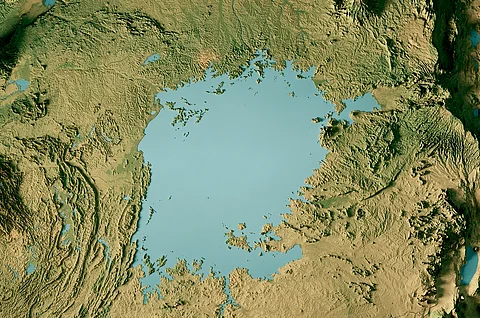

Short-term heat waves, along with long-term global warming, are reducing the levels of dissolved oxygen (DO) on the surface of lakes across the globe according to a new study published in Science Advances on March 21, 2025.
The average deoxygenation rate in global lakes is faster than that observed in the oceans and in rivers. The analysis indicated a continuous deoxygenation in 83 per cent of the studied lakes.
Decreasing solubility due to global warming accounted for 55 per cent of surface oxygen loss in global lakes. While eutrophication is responsible for 10 per cent of surface oxygen loss.
As temperatures continue to increase, surface DO is projected to decrease by 0.34 and 0.76 mg/litre by 2100 under SSP2-4.5 and SSP5-8.5 respectively. As the frequency and impact intensity of heat waves increase, the future impact of heat waves on lake deoxygenation may intensify, particularly in North America and Europe.
Researchers led by Yibo Zhan from the Chinese Academy of Sciences used model-derived DO estimates for 15,535 lakes to investigate the extent to which long-term climate warming and short-term heat waves contribute to surface DO dynamics on a global scale.
The study predicted that stressed lakes will primarily be in tropical regions. There are 238 (SSP2-4.5 scenario) and 279 (SSP5-8.5 scenario) lakes that are projected to experience stress conditions in the future. The predictions for Lake Victoria, Africa’s largest lake by area indicate a prolonged period of low-oxygen levels.
On the basis of ERA5 reanalysis data, the researchers identified atmospheric heat wave events over global lakes during the period of 2003–2023. The average duration of heat waves over global lakes was 15 days per year. Globally, 85 per cent of the studied lakes have experienced a gradual increase in the number of heat wave days per year.
The number of heat wave days has increased across all six continents over the past two decades, with an increase rate of 1.2 days/year in Africa, 0.7 days/year in Asia, 0.6 days/year in Europe, 0.5 days/year in North America, 1.4 days/year in Oceania, and 0.6 days/year in South America respectively.
Deoxygenation is projected to occur more rapidly in Europe and North America compared to Africa, Asia, Oceania and South America. Under SSP5-8.5, projected DO rates are approximately 2.3 times higher than those in SSP2-4.5. Long-term projections suggest that the global mean DO will decrease to 9.11 and 8.70 mg/litre by 2100 under SSP2-4.5 and SSP5-8.5, respectively.
Heat waves can result in a reduction in DO solubility and lead to rapid and substantial fluctuations in DO concentration over short durations. The analysis demonstrated that heat waves negatively affect DO concentrations in lakes worldwide.
A decrease in DO concentrations results in substantial consequences: Reduced nitrogen fixation, increased emissions of N2O (a potent greenhouse gas), limitations on habitat suitability and productivity for oxygen-demanding organisms as well as having adverse impacts on food security, livelihoods and coastal economies.
“The declining oxygen could lead to species extinction, aquatic organism kills and the collapse of commercial fishing industries,” said co-author Zhang Yunlin, Chinese Academy of Sciences.